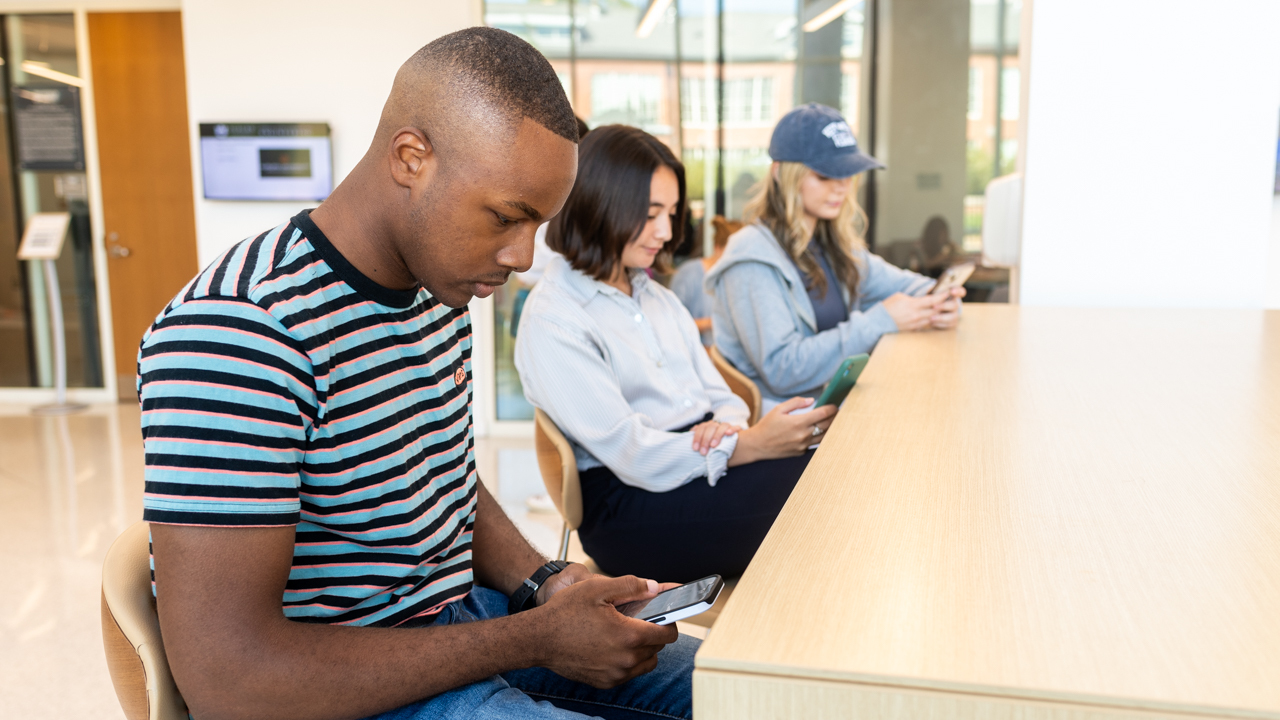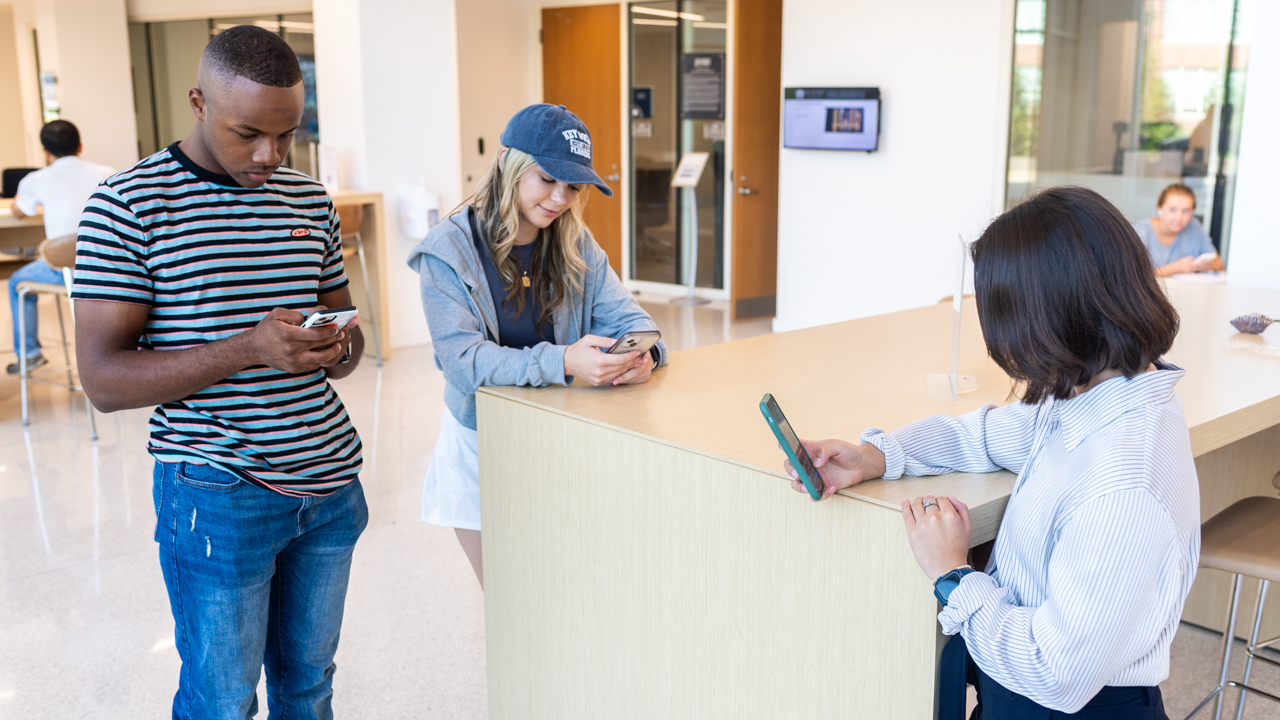Industrial Engineering doctoral students publish paper on physical effects of smartphone usage
Published: Oct 4, 2023 1:00 PM
By Dustin Duncan
It’s not uncommon to pedestrians to encounter hundreds of people walking with their heads tilted down, gripping their smartphones.
Smartphones have become an integral part of society's culture, and researchers have linked prolonged use of these devices to depression and anxiety. However, two graduate students at Auburn University's Samuel Ginn College of Engineering are researching the physical consequences of repeated smartphone usage.
Ravinder Thaper and Murray Gibson, doctoral students in the Department of Industrial and Systems Engineering, recently published a systematic literature review paper “The Role of Smart Hand-Held Devices – Smartphones/iPads/Tablets/Smartwatches in Causing Musculoskeletal Disorders” in the International Journal of Industrial Ergonomics. Other Auburn University authors include Richard Sesek, Industrial and Systems Engineering Tim Cook professor, and Konstantinos Mykoniatis, Industrial and Systems assistant professor.

“The idea of this literary review initially began with a handful of doctoral students talking about possibly completing an independent research project. Initially, the idea was to focus on exoskeleton technology, but the focus quickly shifted to smartphones/devices,” Gibson said. “Then, we began to contemplate the physical impact of smartphones. Almost everyone has one, but we know very little about the potential risks of using them."
Smartphones cost hundreds of dollars to purchase or lease. When individuals carry these devices, they tend to grip the phone in a much tighter, pinching motion than necessary, according to Gibson.
"You don't want to drop the thing because if you do — it's expensive to replace. So, you end up holding onto it much more tightly than necessary, using much more force than the device actually weighs," Gibson said.

The literary review also discusses the impact of using thumbs and fingers to operate touchscreens and how faster texting generates higher finger force. Additionally, the paper explores the effects of prolonged screen usage, which involves looking down at a screen for multiple hours each day.
The typical collect student spends more than six hours per day on their phone, according to Gibson’s research.
"If you spend six hours looking down at your phone, you're supporting the weight of your head and neck, which is about as heavy as a bowling ball," Gibson said. "It’s not something we think about because our bodies are basically calibrated not to sense the forces required to support the weight of the body itself. However, the supporting the head can fatigue the muscles of the neck and upper back."
The paper also describes how screen size and device weight relate to user discomfort. Smart devices with larger screens are preferred to prevent musculoskeletal disorders, as smaller screens often lead to users bending their necks more to the screen.
Gibson said that researchers need to conduct more studies to comprehend the long-term effects of prolonged smartphone usage. However, there are solutions to relieve muscle strain when using smart devices.
He suggested that if sitting, stack a few books elevate the phone, allowing a neutral neck posture while viewing the screen. It's also beneficial to consider not constantly looking at the phone while texting or emailing, but utilize accessories such as Bluetooth headphones or the speech-to-text feature of the phone itself.
“Anything that can keep you in a neutral posture, not requiring bending the neck, or eliminating forces required to use the device can help prevent injuries related to smartphone use,” Gibson said.
Media Contact: , dzd0065@auburn.edu,
Three students look at their smartphones on Auburn University's campus.



